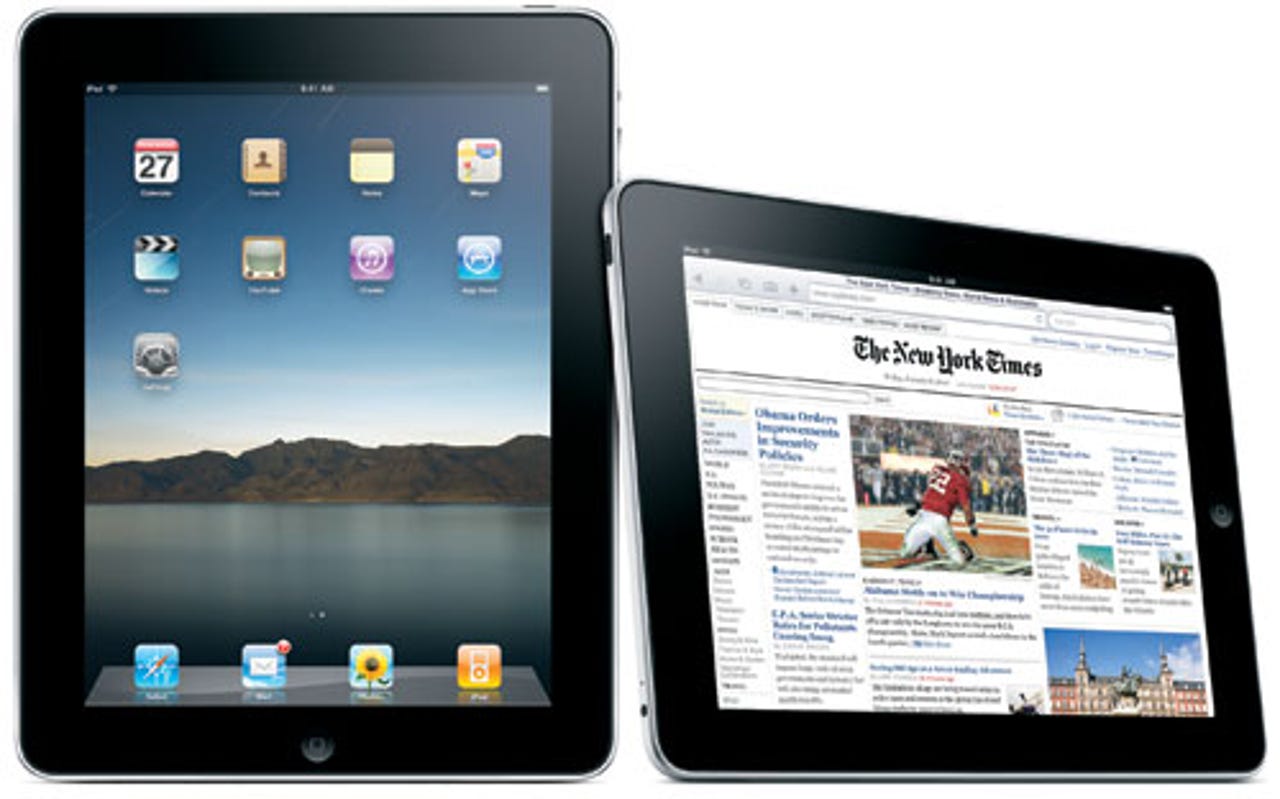iPad at five: Remembering the slate that started it all

It's almost hard to believe that Apple's first iPad arrived in hands five years ago today. Those who pre-ordered the tablet received delivery on April 3, 2010 and Apple Stores also had inventory that same day.
One reason I'll never forget that day is because my son, who was living with his mother at the time, received his iPad before I did. As someone who regularly reviews the latest and greatest products, that situation rarely happens. He still chides me about it, though.

More importantly, I recall how impressed I was with the build quality of the slate. I was also amazed at how thin and simple looking the device was. That first iPad, like all of those that followed it, felt like a picture frame to me; an interactive window into the world of apps and web sites. The basic design intent was to get the technology get out of your way so that you could immerse yourself into whatever task, app, or media you wanted to view. Apple essentially delivered a large screen that just happened to have a computer behind it.
Of course, compared to today's iPad Air 2, the original iPad feels and looks downright chunky. These days, the thought of a 1.5 pound tablet with 13 millimeter thickness almost sounds laughable. My how times have changed: The latest iPad weighs 0.98 pounds and measures 6.1 millimeters thick. It didn't matter back in 2010 though: Carrying that first iPad felt liberating when compared to toting a hefty laptop.
And most laptops couldn't compete with the iPad's all day battery life. Apple claimed 10 hours of run time on a charge but you could often get more than that. The iPad almost spoiled the portability experience of laptops for me since most of them needed a recharge in five hours or so. Sure, those full computers could run a myriad of apps that the iPad couldn't back then, but once the battery is dead, none of them run unless you can find an outlet.
Featured
Apple smartly added an app catalog on day one by allowing iPhone software to run on that first iPad. The experience wasn't great though: Remember tapping that button to scale up a blocky phone app on the tablet? That first iPad needed apps of its own, of course, and they came in the form of universal apps, a precursor to software approaches that are still used today: Windows 10 apps across all devices, anyone?
Indeed, Apple's take on the tablet kickstarted a market that Microsoft tried to build nearly a decade before. Part of the reason those Tablet PCs never took off was an issue of timing: Building a thin and light computer that still had enough power to be useful wasn't really possible. Tacking on a tweaked desktop interface for touch or pen input didn't help either. Once the first iPad arrived though, others jumped into this "new" market for tablets. See Samsung, Motorola, Dell and even Amazon for examples.
Looking back, the timing for the that first iPad -- and all of the tablets that followed it -- just seems right. For the first time, due in part by what Apple learned from its iPhone, we had small enough components with the horsepower to run touch-friendly apps all day long and we didn't have to carry several pounds of equipment to do so.
Whether you use an iPad or a different tablet, today is a good day to remember that we have that first Apple tablet to thank for that. No, the iPad doesn't replace a full computer for some. It's not even the best tablet for others who prefer to use a different platform. Based on more than 250 million iPads sold, it clearly has a home for many, however. And those alternatives might not even be here, or be as good as they are today, if it weren't for that first iPad.